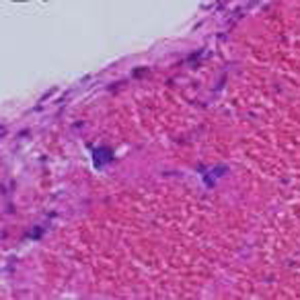Epidural and subdural hematoma following spinal anesthesia in infants rat model

Accepted: 26 August 2022
HTML: 42
All claims expressed in this article are solely those of the authors and do not necessarily represent those of their affiliated organizations, or those of the publisher, the editors and the reviewers. Any product that may be evaluated in this article or claim that may be made by its manufacturer is not guaranteed or endorsed by the publisher.
Authors
The aim of this study was to assess the epidural and subdural hematoma following spinal anesthesia in infants’ rat model. We investigated during 10, 15, and 20 days’ rats in group 1: intrathecal injection of bupivacaine 3.75 mg/kg (n = 7); group 2: received 37.5 μl midazolam 0.1% intrathecal with 37.5μl fentanyl 0.005% (no=7); injected into group 3 methylene blue 1 mg/ml (No. 7). Rats were exposed to spinal anesthesia in infancy and rotarod in motor function in adulthood. Histological evaluation and tissue extraction were also performed after the treatment and magnetic resonance imaging (MRI) of the head. MRI of the head of all rat pups that showed similar symptoms were performed. 4 rat pups showed the symptoms of hematoma Group1: small acute subdural hematoma at the left posterior temporal-parietal junction (PTPJ) and group 2 (one: right temporal epidural hematoma, two: Small acute subdural hematoma in the right temporomandibular area, and three: frontal-temporal-parietal-occipital hematoma). the rat pup that had epidural hematoma died 6 hours later. Finally, in the first group, one rat and the second group three rats showed hematoma symptoms. For these three rats, a histopathologic study was performed and indicate the presence of small acute subdural hematoma at the left posterior temporal-parietal junction, right temporal epidural hematoma, and frontal-temporal-parietal-occipital hematoma. In summary, because subdural or epidural hematoma of the skull can have serious consequences, differential diagnosis is very important for pain after spinal anesthesia.
How to Cite

This work is licensed under a Creative Commons Attribution-NonCommercial 4.0 International License.
PAGEPress has chosen to apply the Creative Commons Attribution NonCommercial 4.0 International License (CC BY-NC 4.0) to all manuscripts to be published.

 https://doi.org/10.4081/ejtm.2022.10778
https://doi.org/10.4081/ejtm.2022.10778



